The Gathering. It’s the best part of Magic, and why we named our website the way that we did. All sorts of different types of people coming together to enjoy one common thread that binds them together, putting aside any differences they may have otherwise for the love of the game. The Magic player base is a diverse collection of persons from across the spectrum, but usually they have some commonalities that allow them to fall into a specific group.
Magic Psychographics, or player types, are a collection of five names that broadly categorize the types of things that players like about their favorite game. The original three – Timmy/Tammy, Johnny/Jenny, and Spike – are mostly focused on the actual game play and piloting the cards, whereas the newer two – Vorthos and Mel – care more about the game itself and the ideas behind it.
Myself, I am a Melvin. I care about the design of the game, the way that the pieces interact, and the way that everything works from a mechanical sense. The type of person who would have a blueprint of their house up on their wall as a decoration. As such, i’ve decided that it might be fun to take a look at the psychographics themselves to see what they might enjoy the most about certain formats. So this will mark the start of a new irregular series, where I dive into the different player types and try to find the best examples of cards that they would enjoy in certain formats, and go over why they might enjoy them.
This will only focus on cards that see competitive play, because those cards are the easiest to find in a giant list. When you say “Cards in this format”, the competitively played cards are the only ones that people think of anyway, so sorry Vorthos, we’re not talking about Broken Bond or the Negate from March of the Machine. In this inaugural article, we’ll be covering the Creatures of Pioneer. Let’s get to it.
Timmy / Tammy
Timmy was the first player type to be named in Wizards of the Coast Development. They are the players who want to make huge plays, and want their presence to be known in the game. While they aren’t fixated on winning necessarily, they do like doing the thing with the most “Splash”, which is a development term referring to the impact on the game a specific card or strategy has. While they aren’t necessarily young, most young players happen to fall into this category because they’re more focused on doing something cool than finding a specific result.
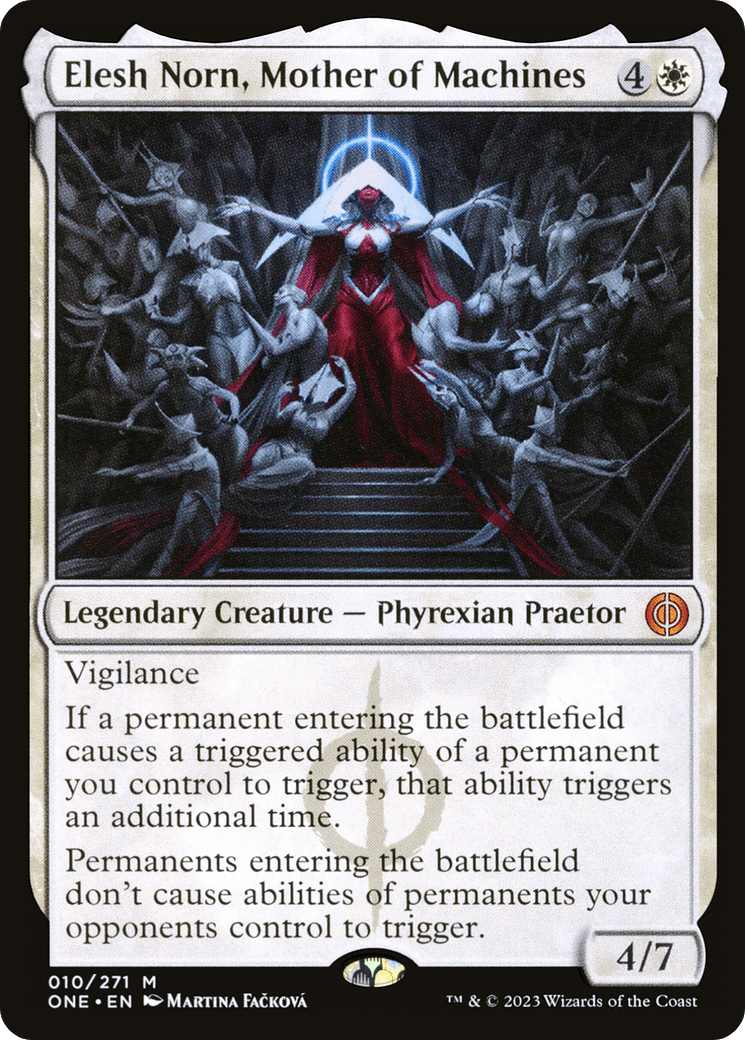
One of the hallmarks for a Timmy card is the thought when you look at it of “How can you lose when you play this?”. Elesh Norn, Mother of Machines was immediately this sort of card the second it was spoiled, and depending on the opponent’s strategy still very much feels like it today. Usually when this card gets played, only half of its effect is the part that matters, but Timmy can and will find a way to make both halves matter, and slam this card onto every boardstate imaginable. Timmys have loved the Panharmonicon-style effect for almost a decade now, and Mommy Norn is the best of any of them.
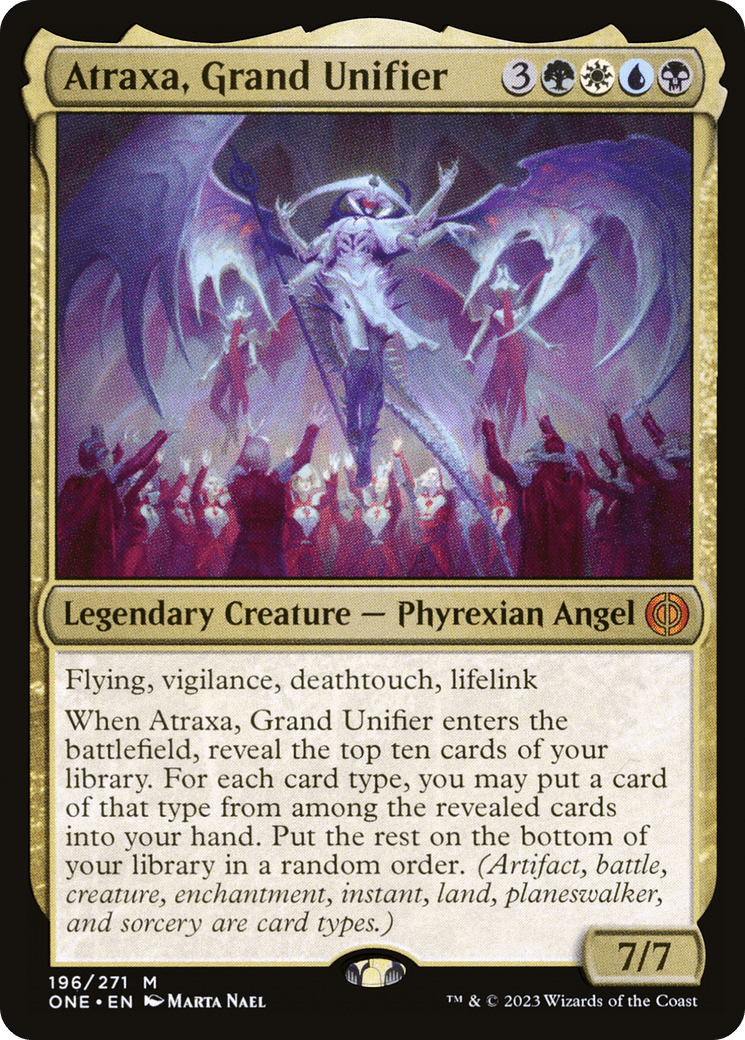
One of the moments that appeals to Timmy in other forms of media is the moment that the Big Bad Evil Guy makes their appearance for the first time. A threat so huge that it feels like nothing could ever take it down, appearing out of nowhere to a chorus of shredding guitars overtop of screaming and panic from the citizens below. At least, that’s the feeling I get when my opponent casts an Atraxa, Grand Unifier. Four incredible keywords on top of being a 7/7 on top of drawing like seven cards when it enters play? My deck can only handle one of those if i’m lucky! As far as Splash goes, dropping an Atraxa into play is a lot like dropping a nuclear bomb into the ocean.
Johnny/Jenny
Johnny is a player who uses Magic as a means to show off their creativity and uniqueness. While Timmy likes to do big stuff, Johnny likes to do weird stuff. Typically known for their appreciation of combos and off-kilter synergies, Johnny is the player who tries to “break” cards that most other players see as bad or underpowered. They are at their peak when they are playing Magic on their own terms.
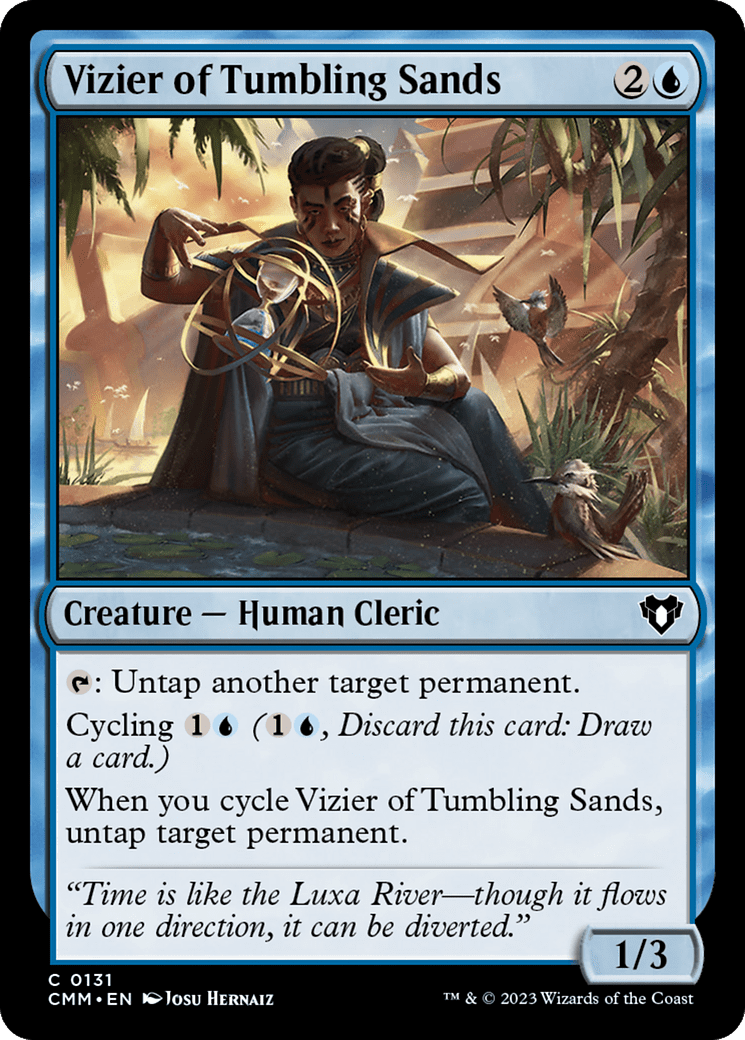
Vizier of Tumbling Sands has been a Johnny card since its inception. This innocuous little cantrip creature’s original intention was to offer a low cost cycle that was also a combat trick. Of course, Johnny being Johnny, noticed that like many other cards that say “Untap… Permanent” before it, Vizier could produce mana if the permanent it was untapping taps for three or more mana. Back in Standard, Vizier was combined with Weirding Wood and other Enchant Land auras to make any land in the deck tap for three, but in Pioneer we don’t need to work nearly as hard thanks to the lovely land Lotus Field. The Lotus Field deck was originally just a Johnny 12 step combo that may or may not actually win the game even if it did its thing, but as the years have gone on it’s morphed into a tournament staple. The unfortunate side effect of Johnny’s prowess for deck building in action.
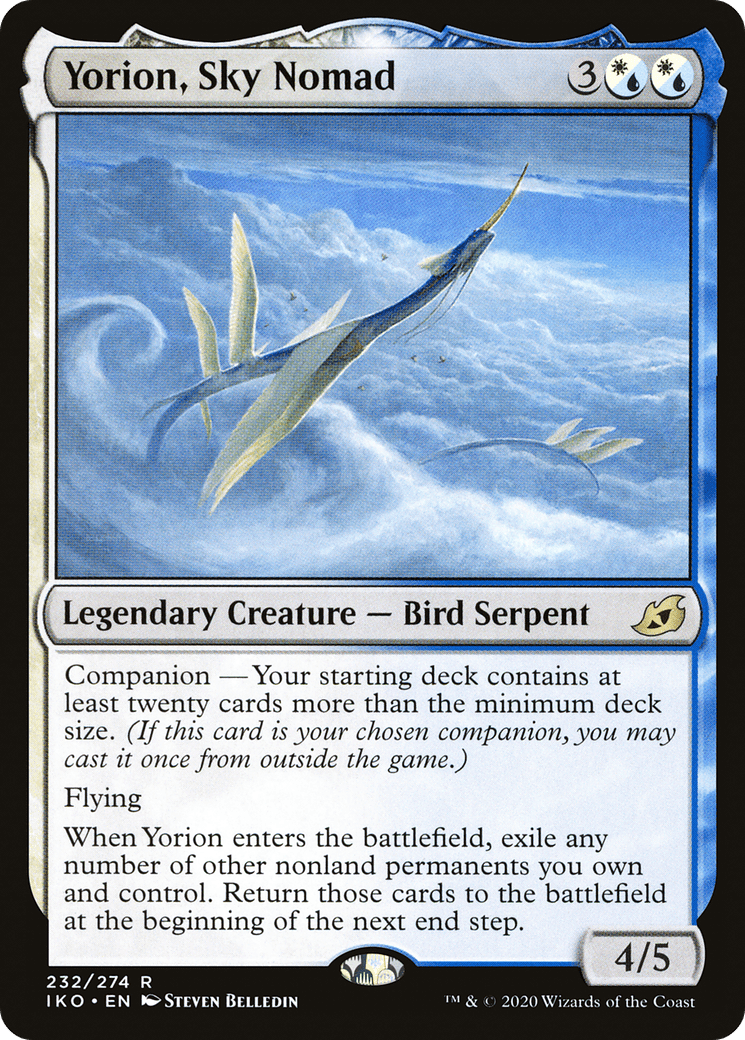
Johnny rejects your traditional deck building conventions, and substitutes his own. 80 cards in the deck but I get this noodly boy for free? Sign me up! When Companions were first announced, Yorion was among the ones that seemed most dubious to build around because even adding a 61st card to your deck was a taboo subject. Figuring out how to maintain the consistency of the deck while also meeting the requirement is a process that took literal years to iron out. But Johnny is no stranger to the slog, they’re willing to put in the hours to fine tune their deck, taking it from jank pile to masterpiece. Yorion, to them, was less about the reward and more about the challenge of building a deck that doesn’t care about twenty extra cards.
Spike
Spikes are a group who use Magic as a means to flex their competitive muscles, and to prove their skill. They forgo the sentimental connection to the cards or decks and the ideas behind them, in pursuit of the glory that can be had from winning the game. Typically you think of a Pro Tour player when you think of a Spike, but they could ultimately be anyone who cares more about the outcome of the game than what happens during the game itself.

Spikes live for efficiency. They like when their cards work to an end, and they like getting something for no cost. Enter (from the graveyard): Arclight Phoenix. This pesky bird has been the centerpiece of one of the best decks throughout Pioneer’s history, and for good reason. There’s something about the Blue Red tempo style deck that draws Spikes in. It’s a deck where every micro decision can change the course of the game, so it really feels like you need to play perfectly at all times to find success. It feels like nothing is ever handed to you, and that you’ve earned every win. From Splinter Twin in Modern to Delver in Legacy, to Phoenix in Pioneer, Blue Red Spells decks have always been a Spike Mainstay.
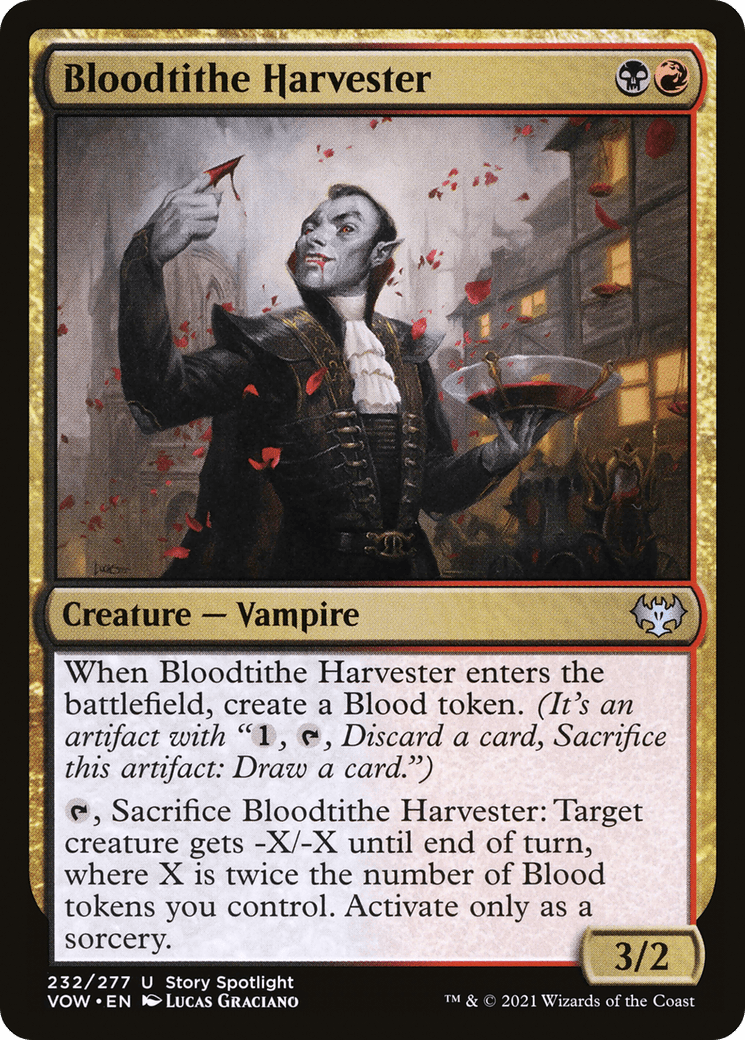
Speaking of efficiency and getting something for nothing, my other pick for the Spike’s best friend is Bloodtithe Harvester – the glue that’s held Midrange decks together since its printing. Bloodtithe Harvester functions as a modal spell that offers the additional value of a Blood Token. Three power for two mana is an excellent rate for an early game creature, and providing the option of turning that two mana into a removal spell instead means that Spike will always feel like they’ve made the right choice when they activate it. Blood tokens effectively let you do the same thing with your hand, turning one of your less-than-useful tools into another card. Even before it was being combined with Fable of the Mirror-Breaker for ultimate late game value, Bloodtithe has been hitting every button for Spikes.
Vorthos
Vorthos is the first of the two aesthetic profiles, a sort of alternative to the gameplay profiles mentioned above. While any player can be any combination of any of these profiles, a Vorthos specifically cares about the lore and flavor of the game. They read each of the stories as they come out, they read all of the flavor text on every card in the set, and they’re the most likely to have a deck named “Four Seasons of Bolas: a Dragon’s Tale throughout the ages” instead of just calling it Grixis Control. Vorthos likes the things that the cards represent more than the actual cards as game pieces, and will often call a “Flavor judge” if something happens in game that doesn’t make sense from a lore perspective, like equipping a creature with only two hands with three swords.
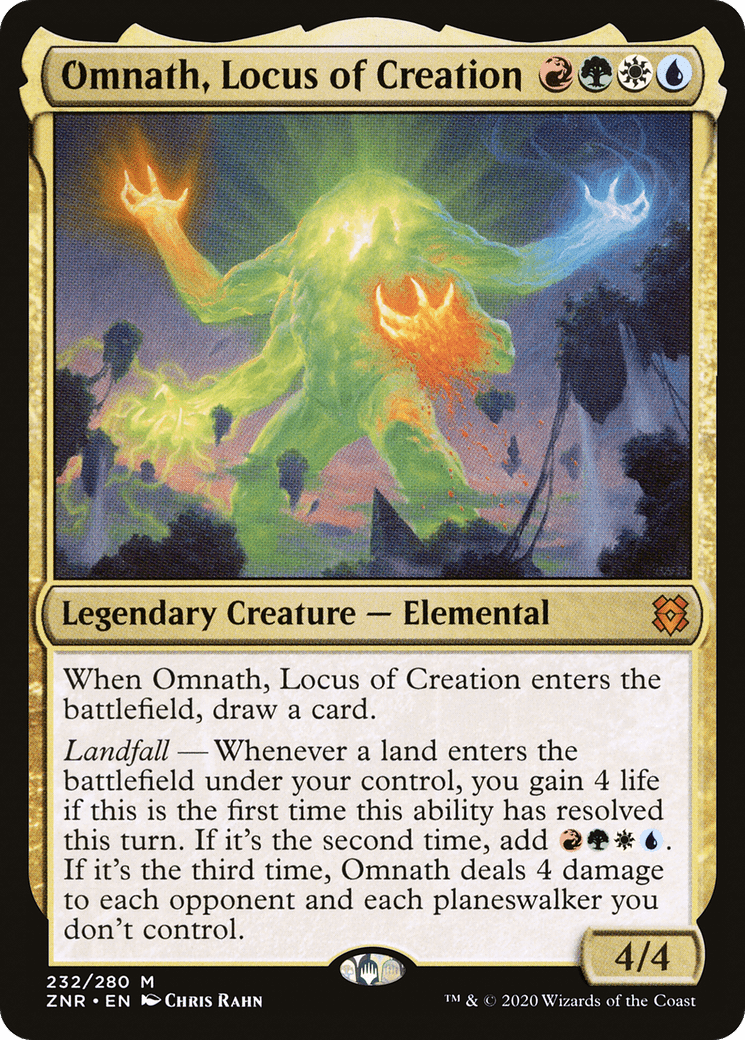
Zendikar is a plane plagued by strife that never seems to be able to catch a break. From being ravaged by the Eldrazi, to being ravaged by the Eldrazi, to being ravaged by the Phyrexians, the inhabitants of Zendikar have had a rough couple of decades. One of the ways that the plane’s history can be tracked is by checking in on Omnath, a character representing the chaotic and wild nature of the plane’s mana. Over time, Omnath has gained additional colors as we revisit the plane, representing the plane itself adapting to whatever threat that currently occupies the place. While Omnath itself is a reasonable card in each of its iterations, it is a being that represents Zendikar and its wellbeing as a whole as well, and seeing the plane’s progression told through Omnath was the perfect experience for Vorthos.

You’ve probably never heard of Mileva. She doesn’t have a legendary creature card to represent her, which means that she’s not someone that the typical Magic player is aware of. She’s represented on Tenth District Legionnaire, as well as about four other cards that tell her story. Mileva is a Boros soldier, living in the Tenth District. We can see her progression through the ranks of the Boros Legion in the sets leading up to War of the Spark, where she proved a priceless asset in defeating Bolas’s invasion. Not to outdo herself, she then went on to battle in the Phyrexian Invasion of Ravnica as well, becoming a Hero of the plane in the process. Today, she works with the Ravnican Agency of Magicological Investigations. Very few other cards or characters have such a rich story that has gone completely unknown except to those who seek it out, but Mileva has always been a hidden gem of sorts to the Vorthoses out there.
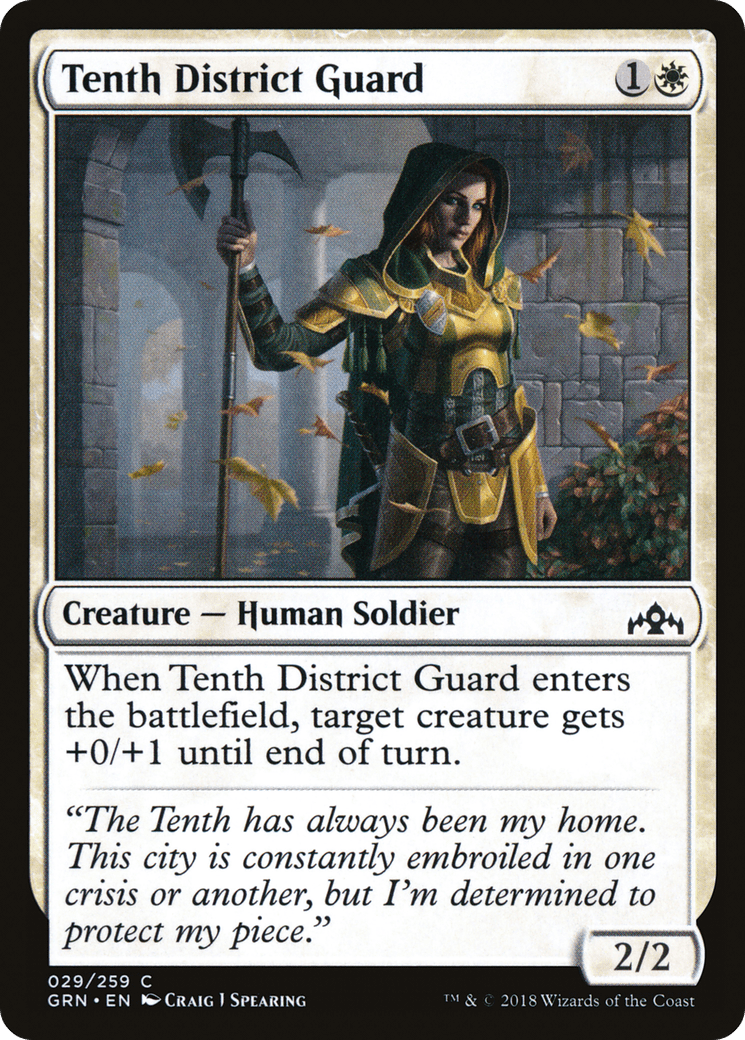
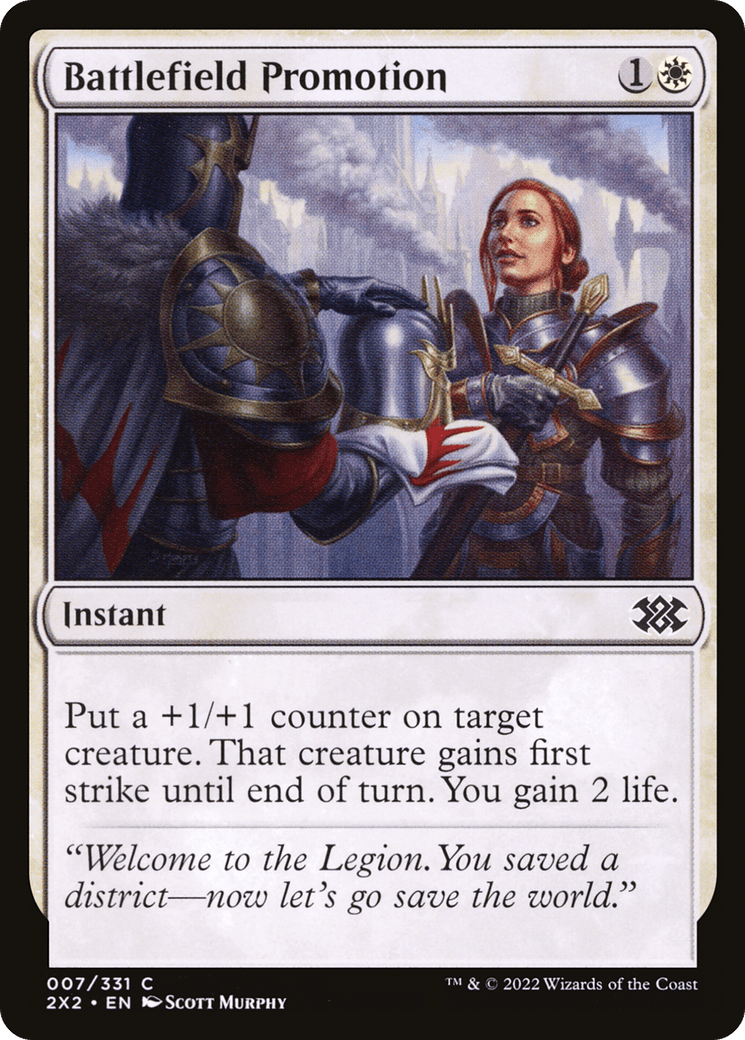
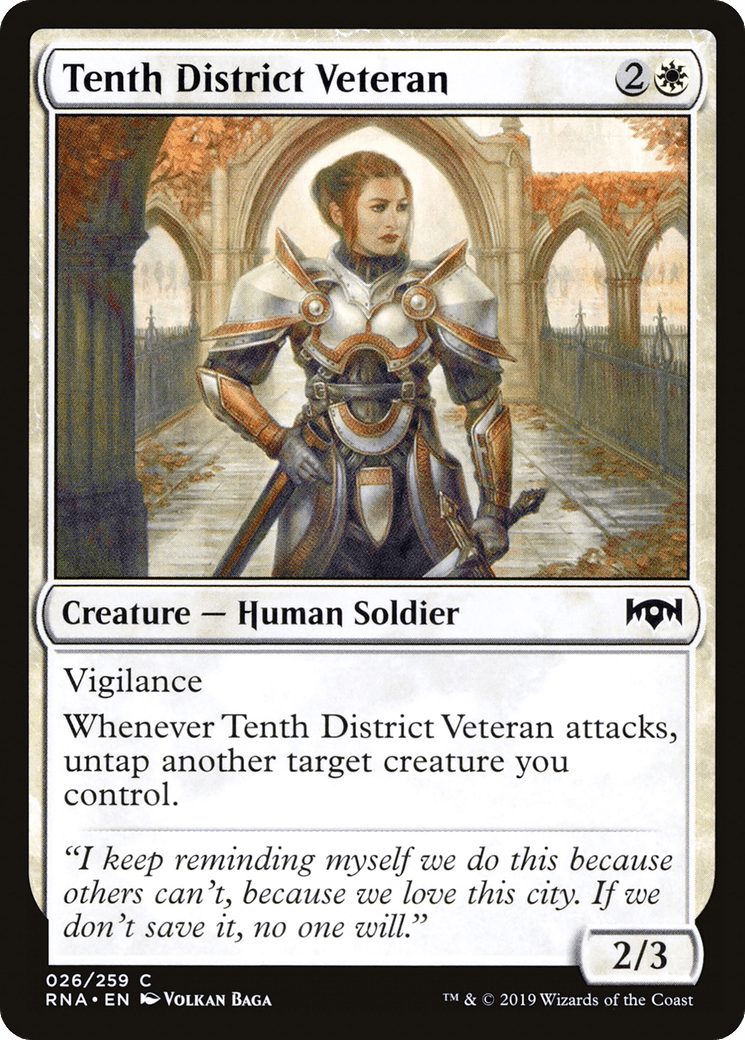
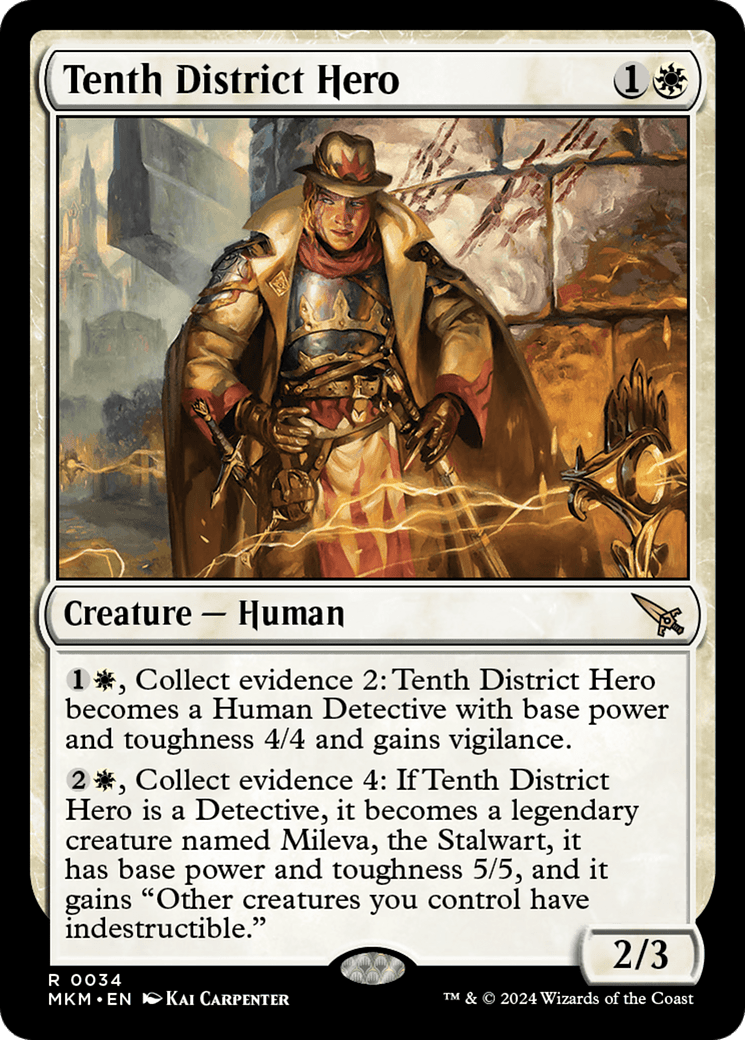
Melvin/Melanie
Mel, as covered briefly above, is the other aesthetic profile capturing a player’s love for the game-side of Magic. From individual card design to the way that keywords and mechanics interact to the color pie and all of its intricacies, Mel sees beauty in the function of the game pieces. Mel doesn’t get caught up in the things that other players like or don’t like, they seek to understand why players don’t like those things even though they need to exist. Mel is the player who will write a 9 page essay on why Mana Screw is actually good for you, or why you might like the specific cards that you like.
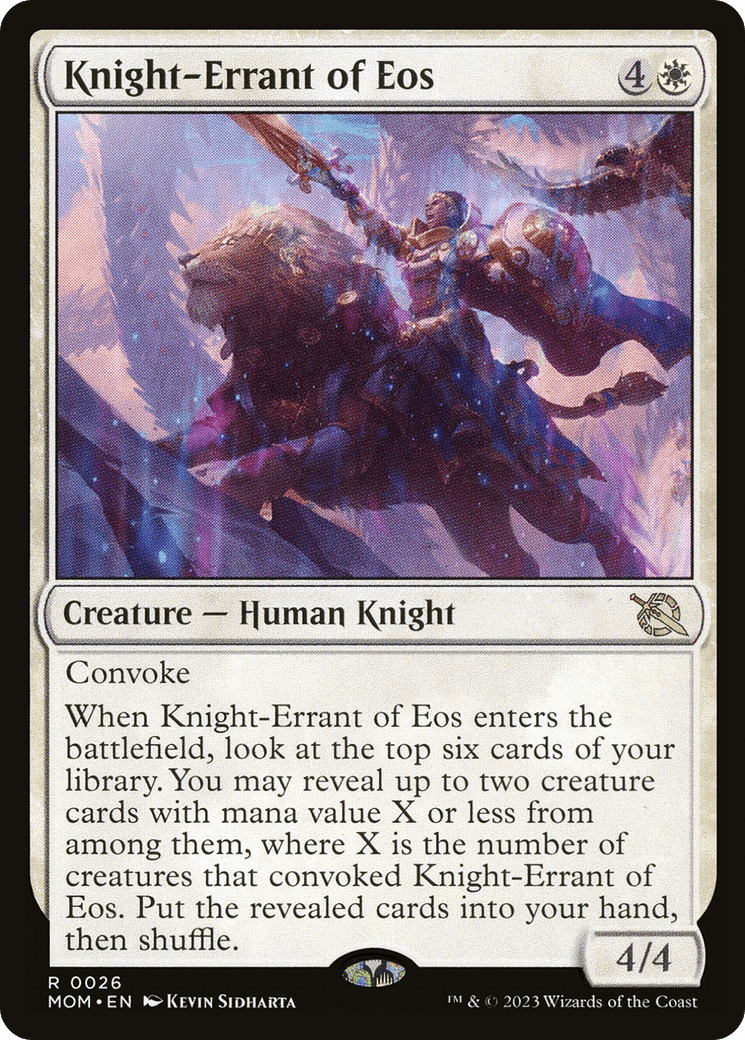
At first glance, Knight-Errant of Eos is a card that doesn’t look much different from other similar cards. It’s a creature that lets you dig for other creatures, we’ve seen that before. There are two lines on this card that really appeal to Mels though; “Where X is the number of creatures that convoked it” and “then shuffle”.
Knight-Errant is a near perfect card from a design standpoint. It’s costed in such a way that you need to fully devote to Convoke to find an additional copy of it, which is a hallmark of a great mechanic for limited. It walks the line between parasitic and flexible, and you get to choose how useful it is for your deck as you build your deck. Very few other mechanics can reward you so well while still also offering something to players who aren’t going all-in.
When Knight-Errant was spoiled, the only thing that people said about it was “Why does it shuffle?!” At first people thought it was a mistake, a vestige of some version of the card from earlier on in its development. However, the shuffle is rather essential to the success of this card’s function specifically in limited. Imagine that you’re a convoke deck. You draw your knight and can only tap three creatures with it. That’s still worthwhile, so you cast it. In your top six, you see two more large-costed convoke creatures that you sure would like to cast. With how players might expect this card to work, you’d not be able to because you’re sending those payoff cards to the bottom of your library. Knight’s shuffle effect bridges the gap between having creatures to pay for a convoke spell, and having convoke spells to cast. An early knight will get you more convoke fodder without screwing over the rest of your draws, and a late knight will find you additional convoke threats. It’s a true thing of beauty that very few people appreciate.
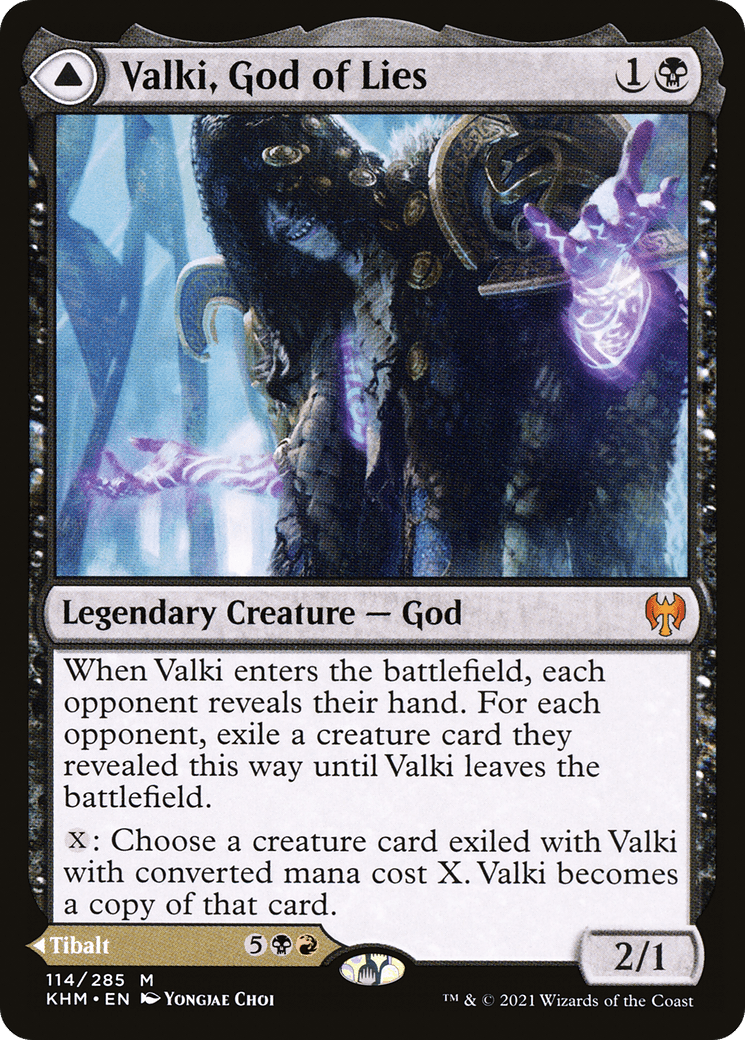
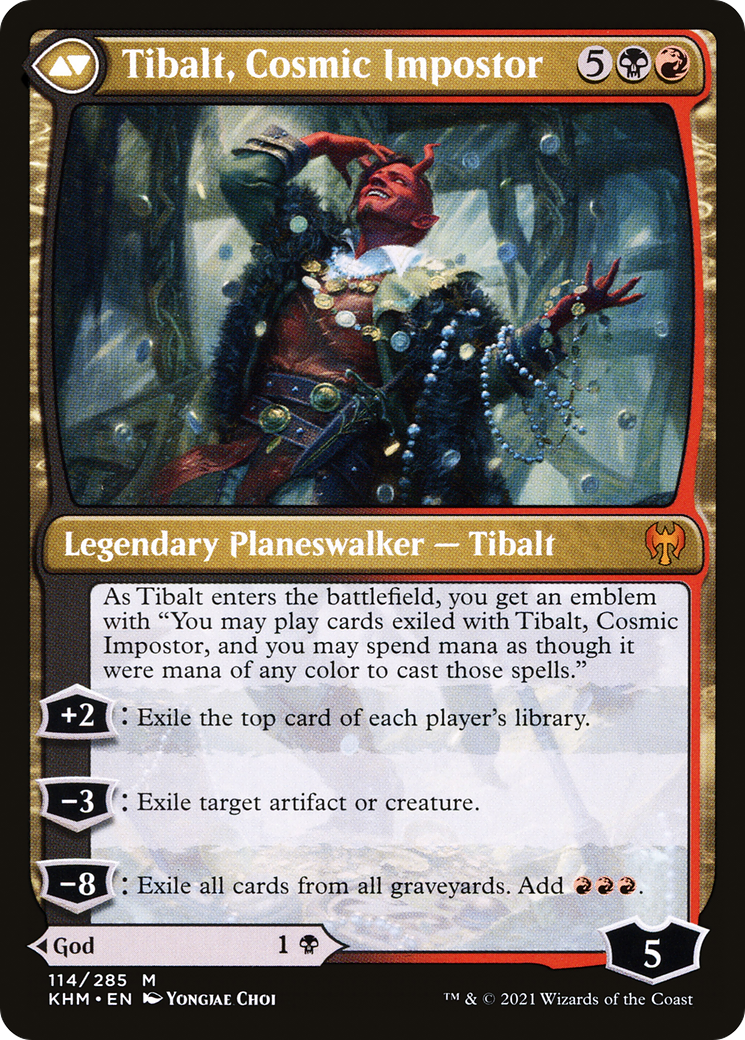
Valki, God of Lies is a messy web of implications and paradigm shifts. It was from a time of many highly questionable design decisions, and showed what it means to truly take a risk in exploring new territory. MDFCs, modal dual faced cards, tried to answer the question of “Why are we only using the back of the card as an effect of the front of the card?” They were a new take on modal spells that give the player more options in exchange for either of the options being slightly worse than if that card had existed on its own. Valki was one of the first cards to see the consequences of this sort of experimental design, when the Cascade mechanic allowed you to find the Valki side from your library and then cast the card on the Tibalt side, effectively netting you seven mana worth of planeswalker for just three mana.
Even though Cascade has been altered to work with MDFCs, you can still use Valki with cards like Bring to Light and Release to the Winds in order to cheat the mana cost of Tibalt. The reason that any of these effects work has always been interesting, because they really solidified the mental boundary of what people conceptualized as “a card”. Originally, players thought of things like Valki as its own card and Tibalt as its own card, but that’s not how the game or its rules see it. The mismatch of expectations between reasonable assumption and mechanical literality really soured a lot of players’ experiences with this type of card, but it has remained a fascinating case study through the years.
That’s all for this one. This was a bit of an experiment for me, so let me know what you thought of the formatting, layout, concept, etc. My hope is that players who don’t fully know which profiles they fit into can have a bit of an easier time falling into one or more of them, because Magic is more enjoyable when you know what you enjoy. Catering your experience with the game to the way that you naturally enjoy things will make for a better time overall, and why would you not want to get the most fun out of the game you’re playing? Until next time, stay safe, play smart, and thanks for reading.
